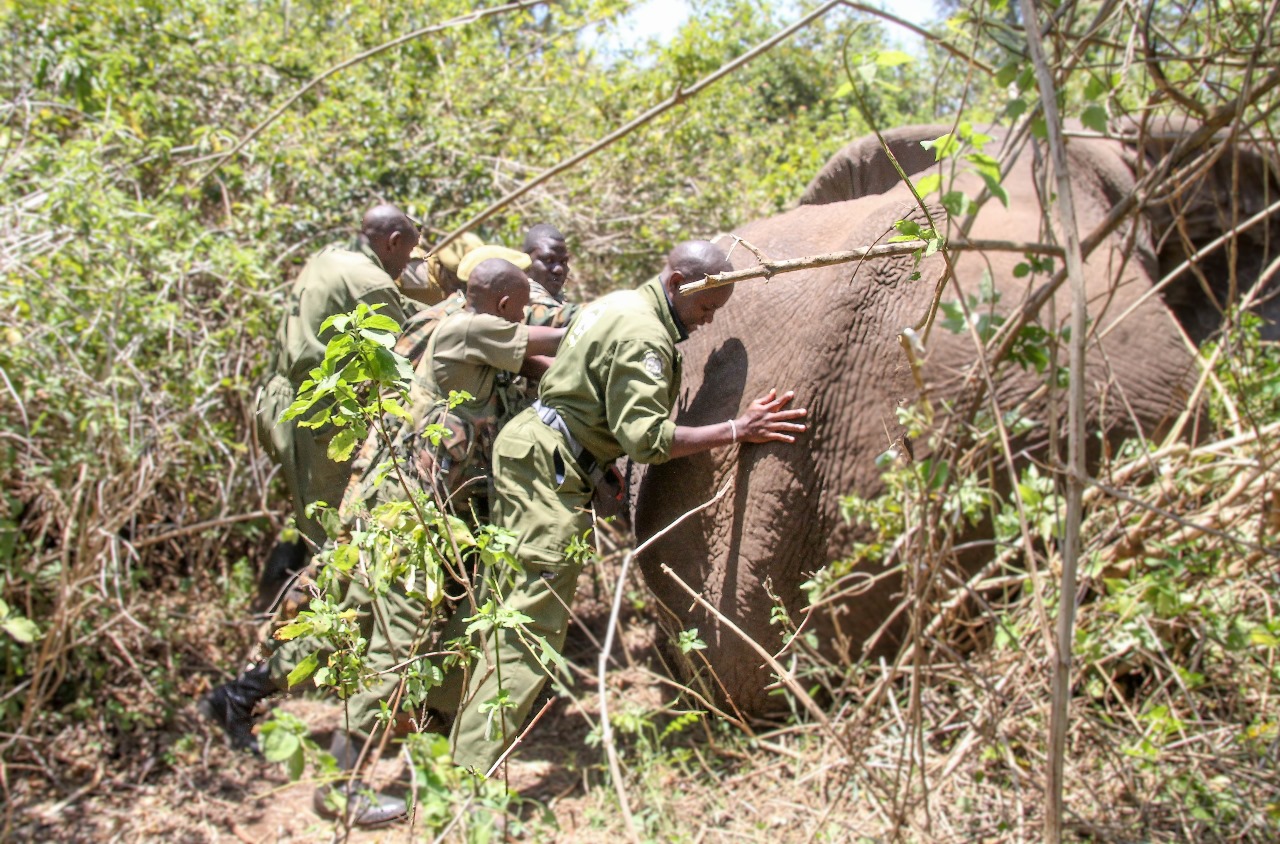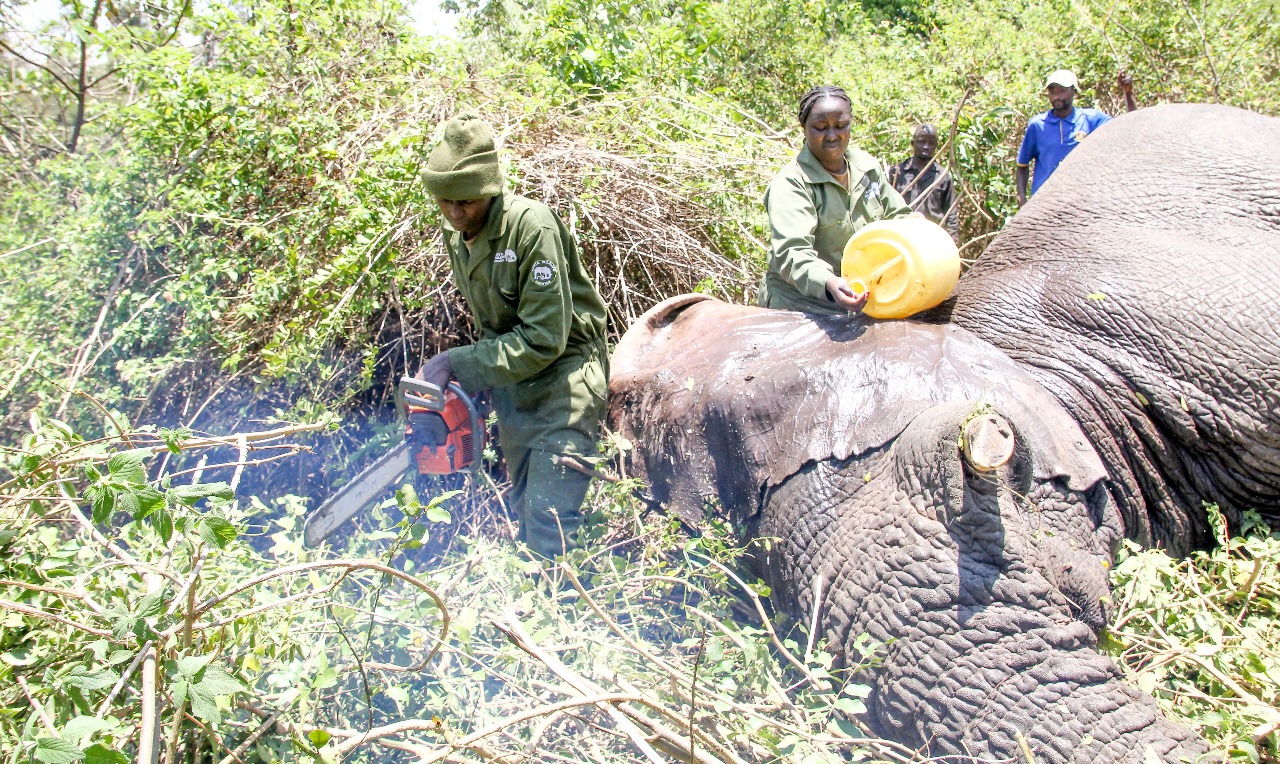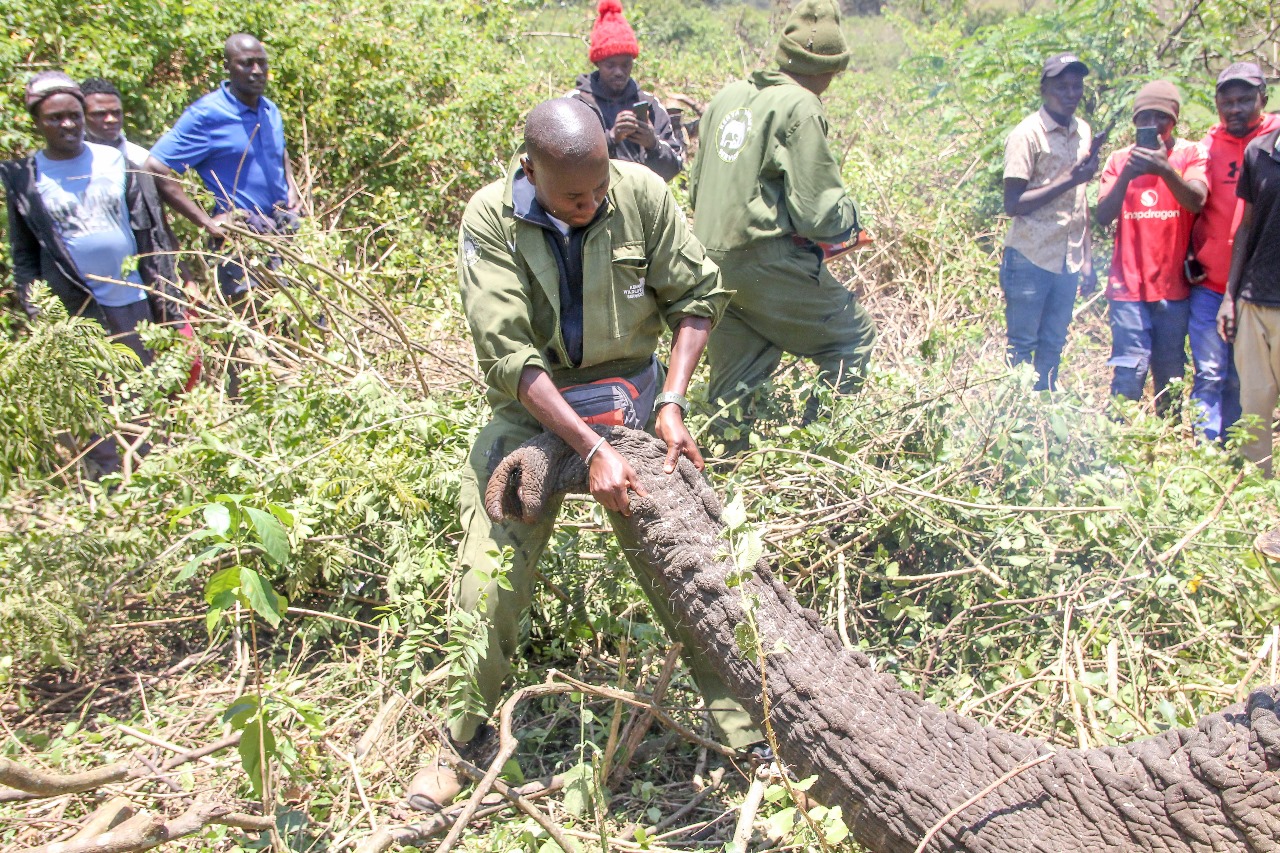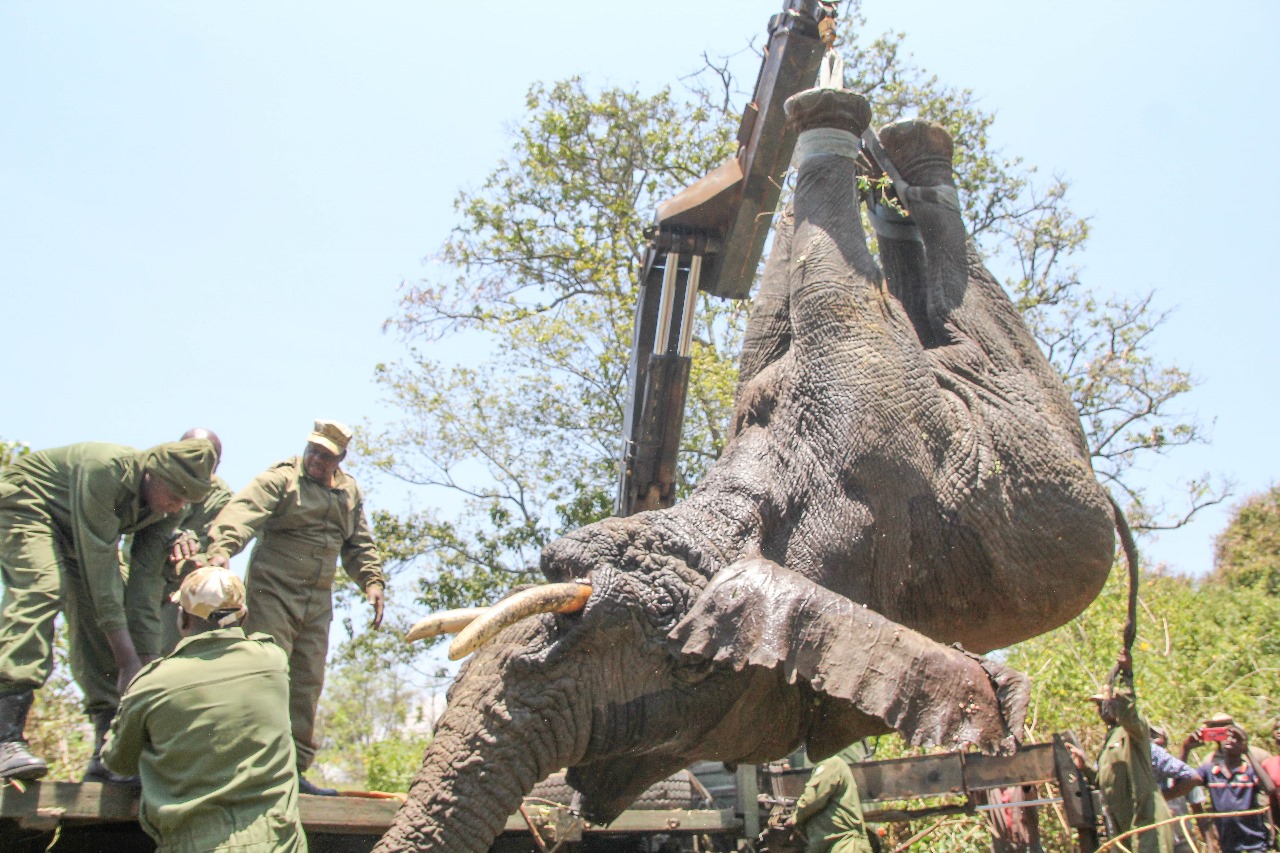
 A bull elephant is released into Tsavo East National Park after successful relocation from Kithoka, near Imenti Forest. /IRENE OUMA/KWS
A bull elephant is released into Tsavo East National Park after successful relocation from Kithoka, near Imenti Forest. /IRENE OUMA/KWS
While electric fences have proven effective in keeping wildlife away from human habitats and drastically reduced human-wildlife conflicts, one bull elephant in Meru had mastered the art of fence-crashing and presented conservationists with a new dilemma.
So skilled was he at it that conservationists feared he would pass on his ‘jail-break’ tactics to a new generation of elephants, worsening conflicts especially around the Imenti Forest region.
Elephants are naturally intelligent animals, and it takes just one troublesome jumbo to outsmart humans, and the entire herd will jump on the trend and cause mayhem.
 KWS Veterinary and Capture Unit, led by Senior Vet Dr. Mathew Mutinda, guides a tranquilized elephant to lie down properly at Kithoka during a relocation operation. Photo by IRENE OUMA/KWS
KWS Veterinary and Capture Unit, led by Senior Vet Dr. Mathew Mutinda, guides a tranquilized elephant to lie down properly at Kithoka during a relocation operation. Photo by IRENE OUMA/KWS
 A KWS officer clears bushes at Kithoka to create a path for the elephant loading truck during a relocation operation. Photo by IRENE OUMA/KWS
A KWS officer clears bushes at Kithoka to create a path for the elephant loading truck during a relocation operation. Photo by IRENE OUMA/KWS
But this particular bull had raised the stakes.
According to the Kenya Wildlife Service (KWS), the lone bull in Kithoka Village had developed “a taste for farmers’ crops” and “become highly adept at breaching the very fences meant to contain him.”
“Elephants are known for their intelligence and remarkable memory; once an elephant learns a successful tactic, such as breaking through an electric fence, it rarely forgets,” KWS explained.
 Dr. Mathew Mutinda, KWS Senior Vet, straightens an elephant's trunk at Kithoka; Imenti, Meru County, to aid its breathing during a relocation exercise to Tsavo East. Photo by IRENE OUMA/KWS
Dr. Mathew Mutinda, KWS Senior Vet, straightens an elephant's trunk at Kithoka; Imenti, Meru County, to aid its breathing during a relocation exercise to Tsavo East. Photo by IRENE OUMA/KWS
 KWS Vet and Capture Unit lifts a tranquilized elephant onto a transport truck at the darting site for relocation to the recovery vehicle. /IRENE OUMA/KWS
KWS Vet and Capture Unit lifts a tranquilized elephant onto a transport truck at the darting site for relocation to the recovery vehicle. /IRENE OUMA/KWS KWS Vet and Capture Unit lifts a tranquilized elephant onto a transport truck at the darting site for relocation to the recovery vehicle. Photo by IRENE OUMA/KWS
KWS Vet and Capture Unit lifts a tranquilized elephant onto a transport truck at the darting site for relocation to the recovery vehicle. Photo by IRENE OUMA/KWS
The real worry, conservationists say, was not just the elephant’s appetite for crops, but his potential as a bad influence on the entire elephant heard in the region.
“This specific bull posed a unique risk of passing on these learned behaviours to younger bulls,” KWS noted.
Aware of this risk, KWS moved with speed and in one of its most dramatic conflict-mitigation measures, took the only practical solution to the unbecoming behaviour of the naughty jumbo - deportation.
KWS insisted that the real frontline of peace between farmers and elephants is always fencing, with relocation coming as the last resort.
Elephants being social learners, a single rogue teacher could easily produce an entire class of crop raiders.
KWS moved the bull more than 400 kilometres away to the sprawling Tsavo East National Park, a vast 13,700-square-kilometer haven where he can enjoy his freedom without turning farmers’ lives upside down.
“Relocating him was a strategic and necessary decision,” KWS said, adding it was as much about protecting people as it was about safeguarding the sustenance of wildlife populations.
 KWS Vet and Capture Unit lifts a tranquilized elephant onto a transport truck at the darting site for relocation to the recovery vehicle. /IRENE OUMA/KWS
KWS Vet and Capture Unit lifts a tranquilized elephant onto a transport truck at the darting site for relocation to the recovery vehicle. /IRENE OUMA/KWSKWS said there was a good reason behind this decision.
In 2023, KWS completed a 52-kilometer solar-powered electric fence along the southern boundary of Imenti Forest in Kithoka Village, a project born out of years of frustration and fear. The results have been transformative.
Families who once woke up to flattened fields now enjoy full harvests.
“The fence has drastically reduced incidents of elephants entering farms, trampling crops, and occasionally causing injuries or fatalities,” KWS said.
With fewer losses, communities are selling surplus produce, reinvesting in their farms, and sending children to school without the dread of a jumbo invasion at night.
 Residents of Kithoka Village watch as the KWS Vet and Capture Unit moves a tranquilized elephant into a recovery truck during a relocation exercise. /IRENE OUMA/KWS
Residents of Kithoka Village watch as the KWS Vet and Capture Unit moves a tranquilized elephant into a recovery truck during a relocation exercise. /IRENE OUMA/KWSAnd the ecological benefits are clear too. The fences, KWS stresses, are carefully designed to keep elephants out of human settlements without blocking natural migratory routes.
In essence, they guide elephants rather than cage them. But even as farmers breathe easier, conservationists warn that the problem is not over.
Encroachment into Imenti Forest continues to squeeze wildlife out of their natural homes.
As habitats shrink, elephants have little choice but to look for food where it is most tempting — in human farms.
The naughty bull of Kithoka, then, was a symptom of a larger issue. His exile to Tsavo may have saved Meru’s bananas and maize for now, but the bigger challenge is keeping the peace long-term.
KWS says plans are already in motion to extend fencing around Mt Kenya and more areas of Meru, while also promoting sustainable farming and community education.
For now, villagers near Imenti can sleep a little easier knowing that the mastermind who made a sport of outwitting fences is far away.
Somewhere in Tsavo, a lone bull elephant is probably still clever, still hungry — but finally, in the right place to be both.













